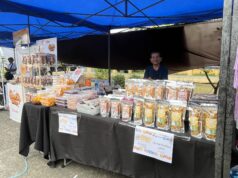CITY OF SAN FERNANDO, Pampanga — About 129,000 hectares of denuded forestlands and watersheds in Central Luzon has been restored under the Enhanced National Greening Program (NGP) since its implementation in 2011.
This is a program of Department of Environment and Natural Resources (DENR) that seeks to mitigate potential impacts of climate change by continuously rehabilitating denuded forestlands and preserving the region’s forest cover.
“Preserving our forest cover and making more of our forest landscapes intact is an important component of the government’s climate change mitigation program. These efforts could reduce communities’ vulnerability to climate shock, as forests could sequester greenhouse gases like carbon dioxide from the atmosphere,” DENR Regional Executive Director Paquito Moreno Jr. said.
Bamboo has been proven effective in curbing greenhouse gas emission. As such, DENR has established more than 3,200 hectares of bamboo plantation in 2021.
This is in addition to the more than 14,000-hectare established bamboo plantations under NGP.
“Partnership with private firms were also strengthened to sustain these plantations, where more than 5,800 hectares of unfunded NGP areas have already been adopted,” Moreno added.
DENR likewise collaborated with families in upland areas, Peoples’ Organizations, Philippine National Police, Bureau of Fire Protection, and Philippine Army to monitor the development of plantations and facilitate quick response against forest fires and reported illegal forest activities in NGP areas.
Apart from its ecological value, the program has generated 154,055 jobs in Central Luzon from its plantation maintenance and protection activities.
NGP aims to reforest 1.5 million hectares of denuded forestlands and watersheds in the country.
It was expanded until 2028 under Executive Order No. 193 to reforest and develop the remaining degraded forest areas. (CLJD-PIA 3)





